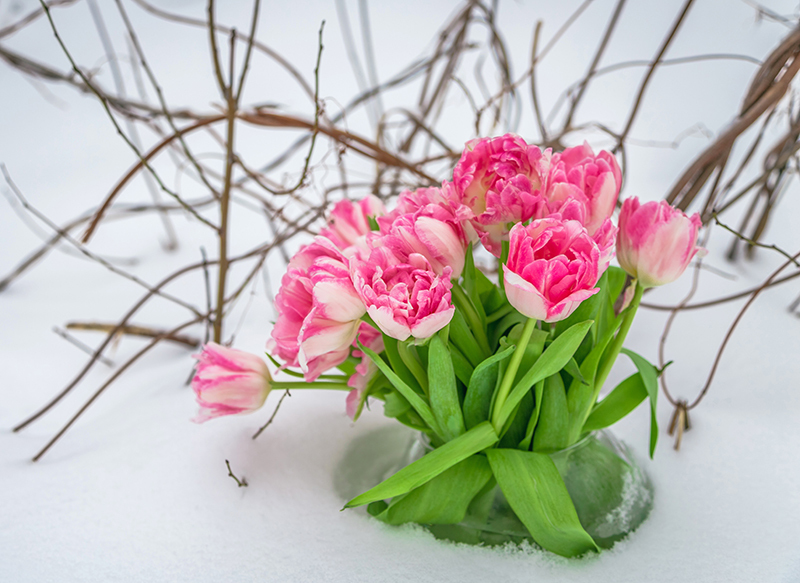Expert Advice on Nurturing Your Cut Flowers
Posted on 24/08/2025
Expert Advice on Nurturing Your Cut Flowers
Discover the secrets to keeping cut flowers fresh and vibrant for longer! Whether you're showcasing a homegrown bouquet or enjoying a thoughtful gift, nurturing your cut flowers is both an art and a science. Follow our comprehensive guide for expert advice, practical tips, and the best techniques to prolong the life and beauty of your cut blossoms.
Why Proper Cut Flower Care Matters
There's nothing quite as uplifting as a vase of fresh blooms gracing your living space. Cut flower care not only extends the lifespan of your flowers but ensures they continue to radiate beauty, fragrance, and color. Understanding how to nurture your cut flowers is essential for:
- Maximizing vase life
- Enhancing floral arrangement aesthetics
- Minimizing waste and cost
- Enjoying the health and mood benefits of fresh flowers
Common Mistakes That Shorten Vase Life
Avoid these pitfalls to keep your flower arrangements looking their best:
- Using dirty vases
- Neglecting to recut stems
- Overcrowding stems in water
- Exposing flowers to direct sunlight or heat
- Using plain water without any floral preservative

Choosing the Best Flowers for Long-Lasting Bouquets
Certain varieties naturally last longer than others in a vase. Opt for hearty blooms and foliage when you want extended enjoyment:
- Chrysanthemums
- Alstroemeria
- Carnations
- Orchids
- Roses (with proper care)
- Sunflowers
- Lisianthus
- Freesia
Tip: Always choose flowers with tightly closed buds and firm stems for maximum vase life!
How to Spot Fresh Cut Flowers at the Store
- Check for vivid color and absence of brown edges
- Press the buds gently-- they should feel firm, not soft or droopy
- Leaves should look green and perky, not yellowing or wilted
- Stems should be strong and moist, never slimy or shriveled
Expert Preparation: Setting Up Your Flowers for Success
Cleanliness is Key
Always start with a sparkling clean vase. Residue, bacteria, or mold in the vase harms your bouquet. Use hot soapy water and rinse thoroughly before use.
Also, wash your hands and any cutting tools to avoid introducing bacteria.
Proper Stem Trimming Techniques
Recutting stems is critical for healthy water uptake.
- Trim stems at a 45-degree angle using sharp scissors or a knife. This maximizes surface area for absorption and prevents the stem from sitting flush with the bottom of the vase, which can impede water flow.
- Remove at least an inch from the bottom of each stem, and always cut under running water or submerged in clean water to prevent air bubbles (embolism) from blocking the stem.
Remove Excess Foliage
Any leaves or greenery below the waterline should be stripped off. Foliage sitting in water rots quickly and promotes bacterial growth, which drastically reduces vase life.
The Importance of Water Quality and Temperature
Your flowers are only as healthy as the water you provide!
- Use room temperature water for most flowers, unless otherwise specified (bulb flowers, such as tulips or daffodils, prefer cold water).
- Refresh vase water every 1-2 days and rinse the vase at each change.
- Add flower food or preservative--it contains nutrients, acidifiers, and antibacterial agents.
- If you don't have commercial flower food, homemade alternatives include a pinch of sugar for nourishment, a few drops of bleach or vodka to reduce bacteria, and lemon juice or vinegar to acidify the water. (Use these methods cautiously.)
Cut Flower Maintenance: Daily Care Habits
Optimal Placement of Flower Arrangements
You can extend the freshness of your cut flowers just by choosing the right spot for your arrangement:
- Avoid direct sunlight, which can wilt petals and shorten vase life.
- Keep flowers away from heat sources like radiators, stoves, or electronics.
- Don't place flowers near ripening fruit--fruits emit ethylene gas, which accelerates aging in flowers.
- Drafty areas, such as by open windows or fans, should be avoided as well.
Routine Upkeep: Daily and Weekly Tasks
- Change the water every 48 hours (or more often if water becomes cloudy).
- Remove wilted blooms and any fallen leaves or petals immediately.
- Recut stems every 2-3 days to aid water uptake.
- Wipe down the vase inside and out to minimize bacterial buildup.
Cut Flower Tips for Specific Varieties
Roses
- Remove outer "guard" petals and leaves below the waterline.
- Cut stems under water--roses are especially prone to air embolism.
- If roses droop, submerge entire stems and heads in cool water for 30-60 minutes.
Lilies
- Remove the pollen-laden stamens to avoid staining petals and prolonging bloom freshness.
- Trim stems and add flower food; lilies love clear, clean water.
Daffodils
- Daffodils exude sap that is toxic to other flowers. If mixing bouquets, "condition" daffodils alone in water for 6-12 hours before combining with other stems.
Tulips
- Tulips "grow" in a vase; keep stems shorter than the height of the vase, and use cold water.
- Change the water daily and avoid direct sunlight, which encourages bending.
Frequently Asked Questions on Cut Flower Care
How long can I expect my cut flowers to last?
Longevity varies: Most cut flowers last 5-14 days with proper nurturing. Carnations and chrysanthemums often hold on longer than delicate flowers like poppies or sweet peas.
Is flower food really necessary?
Yes-- commercial flower food drastically improves vase life by feeding blooms and fighting bacteria. If you run out, you may use DIY methods sparingly, but preservative packets are highly recommended.
Can I revive wilted flowers?
If caught early, sometimes! Trim stems, refresh water, and try soaking blooms in cool water for an hour. Sometimes removing wilted stems helps the surviving flowers last longer.
Why do my flowers wilt so quickly?
Bacteria, dirty water, heat, or improper stem cuts are often to blame. Follow the preparation and maintenance advice above to prevent premature wilting and to nurture your cut flower arrangements to their full potential.
Creative Flower Display Ideas and Advanced Care
Taking your cut flower nurturing routine to the next level can be incredibly rewarding. Here are creative and practical tips for prolonging the beauty of cut flowers:
- Arrange by stem length and water needs--group flowers with similar vase requirements and keep foliage or stems that are fragile away from floppier species.
- Rotate arrangements every day or two to encourage even opening and reduce drooping.
- Refresh your display as needed: Don't hesitate to trim, re-arrange, or transfer surviving flowers into a new, smaller vase for continued enjoyment.
Consider using unusual vases--like pitchers or jars--for rustic elegance or try float arrangements with short-stemmed flowers in shallow bowls for a contemporary look.
Seasonal Considerations for Cut Flowers
The time of year can affect the longevity of your cut blooms. During summer months:
- Water changes should be more frequent due to higher temperatures.
- Keep arrangements out of direct sunlight and in cool rooms if possible.
In winter:
- Protect flowers from cold drafts and never let them freeze.
- Humidity levels indoors may be low, so spritzing flowers (except for those who dislike it, like roses) can help keep petals fresh.

Eco-Friendly Cut Flower Care
Reduce environmental impact while enjoying fresh bouquets by adopting sustainable practices:
- Choose locally grown or organic flowers whenever possible.
- Compost spent stems and petals instead of throwing them away.
- Reuse vases, and consider making your own biodegradable flower food.
- Dry or press long-lasting blooms to enjoy them after their vase life is over.
Conclusion: The Art and Science of Nurturing Your Cut Flowers
Caring for cut flowers goes beyond the initial arrangement--it's a daily ritual that combines knowledge, attentiveness, and a touch of creativity. By following these expert tips for nurturing your cut flowers, you'll enjoy lush arrangements that captivate the senses and brighten your living spaces for days, or even weeks, to come.
For more inspiration and the latest in floral care, be sure to check back regularly for updated tips and seasonal advice!
Now it's your turn: bring home your next bouquet with confidence and nurture your cut flowers to their fullest beauty!
Latest Posts
Find your perfect low-care office companion plant
Expert Advice on Nurturing Your Cut Flowers
Unveiling the Secrets: 8 Unknown Facts About Sunflowers





